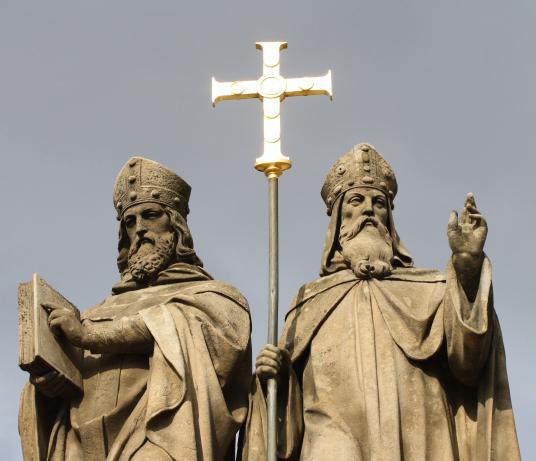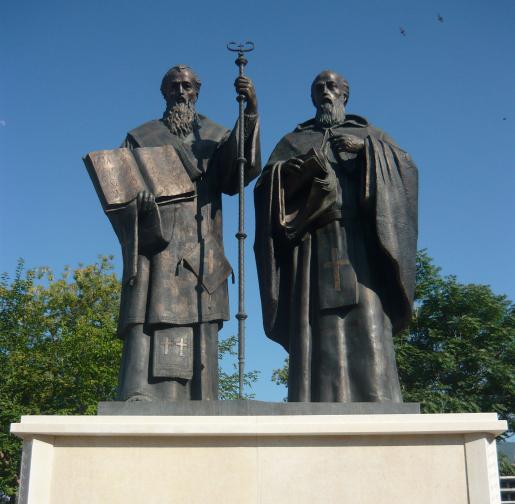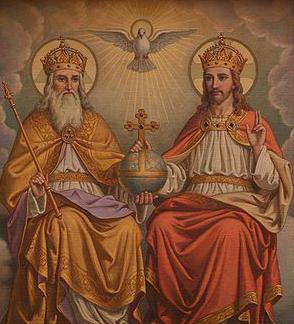The role of writing in the development of the entire human society cannot be overestimated. Even before the appearance of letters familiar to us, ancient people left various inscriptions on stone and rocks. At first these were drawings, then they were replaced by hieroglyphs. Finally, a letter more convenient for transmitting and understanding information appeared using letters. Centuries and millennia later, these signs-symbols helped to restore the past of many peoples. A special role in this case was played by written monuments: various codes of laws and official documents, literary works and memoirs of prominent people.
Today, knowledge of that language is an indicator not only of a person's intellectual development, but also determines his attitude to the country in which he was born and lives.
How it all began
In fact, the basis for the creation of the alphabet was laid by the Phoenicians at the end of the 2nd millennium BC. e. They came up with consonants, which they used for a long time. Subsequently, their alphabet was borrowed and improved by the Greeks: vowels already appeared in it. This was around the 8th century BC. e. Further, the history of the alphabet of the Russian language can be reflected in the scheme: Greek letter - Latin alphabet - Slavic Cyrillic. The latter served as the basis for the creation of writing among a number of related peoples.
Formation of the Old Russian state
From the 1st century AD, the process of disintegration of the tribes that inhabited the territory of Eastern Europe and spoke the common Proto-Slavic language began. As a result, Kievan Rus was formed in the region of the middle Dnieper, which later became the center of a large state. It was inhabited by a part of the Eastern Slavs, who eventually developed their own special way of life and customs. The story of how the Russian alphabet appeared was further developed.

The growing and strengthening state established economic and cultural ties with other countries, primarily Western European ones. And for this, writing was needed, especially since the first Church Slavonic books began to be brought to Russia. At the same time, there is a weakening of paganism and the spread throughout Europe of a new religion - Christianity. It was here that an urgent need arose for the "invention" of the alphabet, thanks to which the new teaching could be conveyed to all Slavs. It was the Cyrillic alphabet, created by the "brothers of Thessalonica".
The important mission of Constantine and Methodius
In the 9th century, the sons of a noble Thessalonica Greek, on behalf of the Byzantine emperor, went to Moravia - at that time a powerful state located within the borders of modern Slovakia and the Czech Republic.

Their task was to acquaint the Slavs who inhabited Eastern Europe with the teachings of Christ and the ideas of Orthodoxy, and also to hold services in the native language of the local population. The choice fell on two brothers not by chance: they had good organizational skills, showed special diligence in their studies. In addition, both were fluent in Greek and Konstantin (shortly before his death, after being tonsured a monk, he was given a new name - Cyril, with whom he went down in history) and Methodius became the people who came up with the alphabet of the Russian language. This was perhaps the most significant result of their mission in 863.
Cyrillic base
When creating the alphabet for the Slavs, the brothers used the Greek alphabet. The letters corresponding to the pronunciation in the languages of these two peoples, they left unchanged. To designate the sounds of Slavic speech that were absent from the Greeks, 19 new signs were invented. As a result, the new alphabet included 43 letters, many of which subsequently entered the alphabets of the peoples who once spoke a common language.
But the story of who invented the alphabet of the Russian language does not end there. During the 9th-10th centuries, two types of alphabet were common among the Slavs: Cyrillic (it was mentioned above) and Glagolitic. The second contained a smaller number of letters - 38 or 39, their style was more complicated. In addition, the first signs were used additionally to indicate numbers.
So did Cyril invent the alphabet?
For several centuries, researchers have found it difficult to give an unambiguous answer to this question. In the "Life of Cyril" it is noted that "with the help of his brother ... and students ... he compiled the Slavic alphabet ...". If this is true, then which of the two - Cyrillic or Glagolitic - is his creation? The matter is complicated by the fact that the manuscripts made by Cyril and Methodius have not been preserved, and in later ones (related to the 9th-10th centuries) none of these alphabets is mentioned.

To understand who invented the alphabet of the Russian language, scientists have done a lot of research. In particular, they compared one and the other with the alphabets that existed even before their appearance and analyzed the results in detail. They did not come to a consensus, but most agree that Cyril most likely invented the Glagolitic alphabet, and even before his trip to Moravia. This is supported by the fact that the number of letters in it was as close as possible to the phonetic composition of the Old Slavonic language (designed specifically for writing). In addition, in their style, the Glagolitic letters differed to a greater extent from Greek ones and bear little resemblance to modern writing.
The Cyrillic alphabet, which became the basis for the Russian alphabet (az + beeches is the name of its first letters), could have been created by one of Konstantin's students - Kliment Okhritsky. He named it after his teacher.
The formation of the Russian alphabet
Regardless of who invented the Cyrillic alphabet, it was she who became the basis for the creation of the Russian alphabet and the modern alphabet.
In 988, Ancient Russia accepts Christianity, which significantly influenced the further fate of the language. Since that time, the formation of their own writing begins. Gradually, the Old Russian language, the alphabet of which is based on the Cyrillic alphabet, is being improved. It was a lengthy process that ended only after 1917. Then the last changes were made to the alphabet that we use today.
![]()
How Cyrillic changed
Before the Russian alphabet acquired the form it has today, the fundamental alphabet underwent a number of changes. The most significant were the reforms in 1708-10 under Peter I and in 1917-18 after the revolution.
Initially, the Cyrillic alphabet, which was very reminiscent of the Byzantine script, had several extra, doublet, letters, for example, i=i, o=ѡ - they were most likely used to convey Bulgarian sounds. There were also various superscripts that indicated stress, aspirated pronunciation.

Before the reign of Peter I, letters denoting numbers were drawn up in a special way - it was he who introduced the Arabic account.
In the first reform (this was due to the need to draw up business papers: 7 letters were removed from the alphabet: ξ (xi), S (green) and iotized vowels, I and Y were added (they replaced the existing ones), ε (reverse). This greatly simplified alphabet, and it began to be called "civilian". In 1783, N. Karamzin added the letter Y. Finally, after 1917, 4 more letters disappeared from the Russian alphabet, and b (er) and b (er) began to denote only the hardness and softness of consonants .
The name of the letters has also completely changed. Initially, each of them was a whole word, and the whole alphabet, according to many researchers, was filled with a special meaning. This showed the mind of those who invented the alphabet. The Russian language has preserved the memory of the first names of letters in proverbs and sayings. For example, “start from the basics” - that is, from the very beginning; "Fita yes Izhitsa - the whip is approaching the lazy." They are also found in phraseological units: “to look with a verb”.
Praise to the Great Saints
The creation of the Cyrillic alphabet was the greatest event for the entire Slavic world. The introduction of writing made it possible to pass on to the descendants the accumulated experience, to tell the glorious history of the formation and development of independent states. It is no coincidence that they say: "If you want to know the truth, start with the ABC."

Centuries pass, new discoveries appear. But those who came up with the alphabet of the Russian language are remembered and revered. The proof of this is the holiday, the Day which is celebrated annually on May 24 all over the world.
